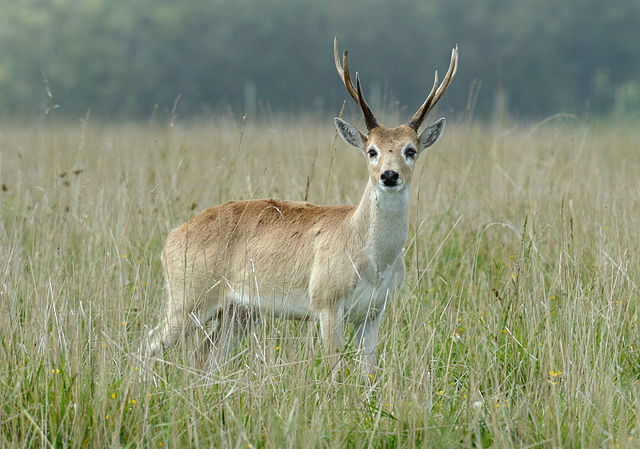The Pampas are fertile South American low grasslands that cover more than 1,200,000 square kilometres (460,000 sq mi) and include the Argentine provinces of Buenos Aires, La Pampa, Santa Fe, Entre Ríos, and Córdoba; all of Uruguay; and Brazil's southernmost state, Rio Grande do Sul. The vast plains are a natural region, interrupted only by the low Ventana and Tandil hills, near Bahía Blanca and Tandil (Argentina), with a height of 1,300 m (4,265 ft) and 500 m (1,640 ft), respectively.
Landscape in the Pampas at eye level. Brazil
Taim Ecological Station, in the southernmost of Rio Grande do Sul (near the Atlantic Ocean), Brazil, is an example of flat topography with wetlands.
Coxilhas (low hills covered by grasslands) in Morro Redondo, Rio Grande do Sul, Brazil
Pampas deer
Quechua, also called Runasimi in Southern Quechua, is an indigenous language family that originated in central Peru and thereafter spread to other countries of the Andes. Derived from a common ancestral "Proto-Quechua" language, it is today the most widely spoken pre-Columbian language family of the Americas, with the number of speakers estimated at 8–10 million speakers in 2004, and just under 7 million from the most recent census data available up to 2011. Approximately 13.9% of Peruvians speak a Quechua language.
The vocabulary of the general language of the Indians of Peru, called Quichua (1560). From Domingo de Santo Tomás the first writer in Quechua.
Act of Argentine Independence, written in Spanish and Quechua (1816)





